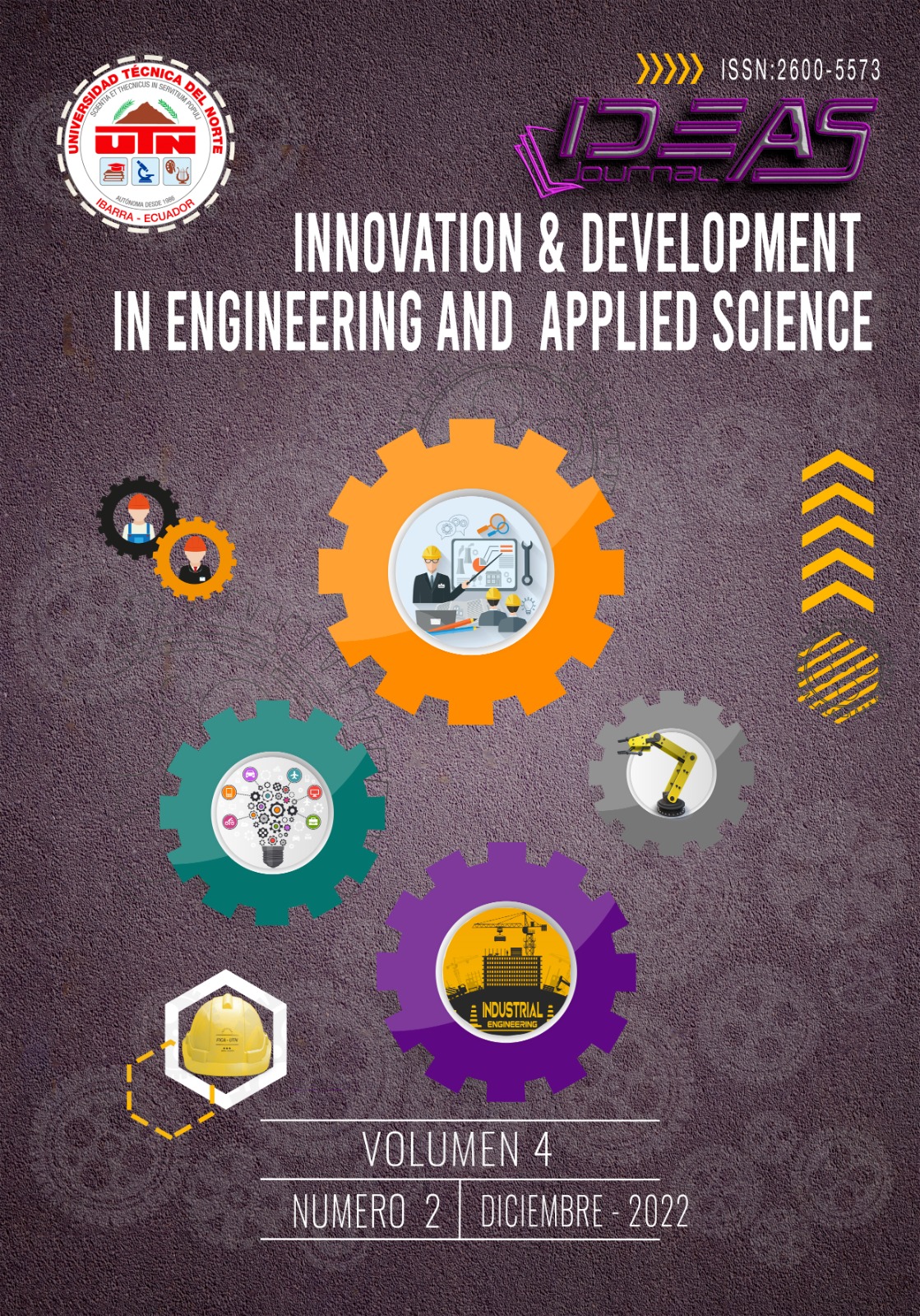A Framework for implanting EITA in SMEs: Leadership, communication, project management, and change management.
Main Article Content
Abstract
One of the main problems in implanting enterprise applications in Small and Medium Enterprises (SMEs) is the lack of methodological support to guide SMEs and IT consultants in this process. Besides, there is little information about leading the implantation project, change management, leadership, and communication in an integrated way. This article's objective is to provide methodological guides that allow the implantation teams to carry out this management appropriately. This work is based on a field study and interviews with key informants who know about implanting Enterprise IT Applications (EITA) in SMEs. This research results in a descriptive framework that allows the joint management of these four transversal areas (leadership, communication, project management, and change management) and the two focus areas (processes and people).
Downloads
Article Details
References
T. H. Nguyen, M. Newby, and M. J. Macaulay, “Information Technology Adoption in Small Business: Confirmation of a Proposed Framework,” J. Small Bus. Manag., vol. 53, no. 1, p. 207, Jan. 2015, Accessed: May 12, 2016.
F. Mahmood, A. Z. Khan, and R. H. Bokhari, “ERP issues and challenges: a research synthesis,” Kybernetes, vol. 49, no. 3, pp. 629–659, Jan. 2019, https://doi.org/10.1108/K-12-2018-0699.
R. Reicher, N. Komáromi, and Á. Szeghegyi, “The possible success factors of introduction of CRM system at hungarian SMEs,” Acta Polytech. Hung., vol. 12, no. 8, pp. 215–229, 2015.
L. Shaul and D. Tauber, “CSFs along ERP life‐cycle in SMEs: a field study,” Ind. Manag. Data Syst., vol. 112, no. 3, pp. 360–384, Mar. 2012, https://doi.org/10.1108/02635571211210031.
E. Hustad and D. H. Olsen, “Critical Issues Across the ERP Life Cycle in Small-and-Medium- Sized Enterprises: Experiences from a Multiple Case Study,” Procedia Technol., vol. 9, pp. 179–188, 2013, https://doi.org/10.1016/j.protcy.2013.12.020.
R. Seethamraju, “Adoption of Software as a Service (SaaS) Enterprise Re- source Planning (ERP) Systems in Small and Medium Sized Enterprises (SMEs),” Inf. Syst. Front., vol. 17, no. 3, pp. 475–492, May 2014, https://doi.org/10.1007/s10796-014-9506-5.
M. I. Nofal and Z. M. Yusof, “Taxonomy framework of erp success usage in smes in middle east region,” J. Theor. Appl. Inf. Technol., vol. 86, no. 3, pp. 420–431, 2016.
F. Deltour, “ERP Project in SMEs: A matter of risks, a matter of competencies. A Quantitative analysis,” ECIS 2012 Proc., May 2012, [Online].
M. Ghobakhloo, T. S. Hong, M. S. Sabouri, and N. Zulkifli, “Strategies for Successful Information Technology Adoption in Small and Medium-sized En- terprises,” Information, vol. 3, no. 1, pp. 36–67, Feb. 2012, https://doi.org/10.3390/info3010036.
M. J. González, E. Martín, G. Buiza, M. Hidalgo, and J. Beltrán, “Implementa- tion of an operations management system in eight Spanish SMEs,” in 2015 In- ternational Conference on Industrial Engineering and Systems Management (IESM), Oct. 2015, pp. 1296–1302. https://doi.org/10.1109/IESM.2015.7380319.
S. Sahran, F. A. Goni, and M. Mukhtar, “ERP implementation challenges in small and medium enterprise: A framework and case study,” Adv. Mater. Res., vol. 139–141, pp. 1636–1639, 2010, https://doi.org/10.4028/www.scientific.net/AMR.139-141.1636.
R. Seethamraju, “Enterprise system’s characteristics in small and medium-sized enterprises context - A case study,” presented at the Proceedings of the Europe- an and Mediterranean Conference on Information Systems, EMCIS 2008, 2008.
I. Reascos and J. A. Carvalho, “Successful Implantation of Enterprise IT Appli- cations in SMEs: A TOE-Based Framework of Influencing Factors,” in Digital Technologies and Transformation in Business, Industry and Organizations, Springer International Publishing, 2022, pp. 197–219. https://doi.org/10.1007/978-3-031- 07626-8_10.
Y.-R. Zeng, L. Wang, and X.-H. Xu, “An integrated model to select an ERP system for Chinese SME under uncertainty,” Technol. Econ. Dev. Econ., vol. 23, no. 1, pp. 38–58, 2017, https://doi.org/10.3846/20294913.2015.1072748.
A. Douglas, D. Wainwright, and D. Greenwood, “The Dynamics of IT Supplier Relationships with Construction SMEs: a Technological Approach,” UK Acad. Inf. Syst. Conf. Proc. 2010, Mar. 2010, [Online]. Available: http://aisel.aisnet.org/ukais2010/20
A. Serrano, H. Chen, and A. Serrano, “Investigating Factors Affecting Integra- tion Technologies Adoption in Organizations,” AMCIS 2010 Proc., Aug. 2010, [Online]. Available: http://aisel.aisnet.org/amcis2010/180
I. Reascos Paredes and J. Carvalho, “SImplE: A Framework for the Successful Implantation of Enterprise IT Applications in Small and Medium Enterprises,”Int. Conf. Inf. Syst. Dev. ISD, Dec. 2019, [Online]. Available: https://aisel.aisnet.org/isd2014/proceedings2019/ISDMethodologies/15[18] R. Yin, Case Study Research. Design and Methods, 5th ed. SAGE Publications, 2014.
U. Kuckartz, Qualitative Text Analysis. a Guide to Methods, Practice and Us- ing Software, First edition. 2014. Accessed: Oct. 11, 2018. [Online]. Available: https://us.sagepub.com/en-us/sam/qualitative-text-analysis/book240393
Adair International, “Action Centred Leadership - Your guide.” Adair Interna- tional, 2017. [Online]. Available: http://www.adair- international.com/actionleadershipguide.html
PMI, “PMBOK - Guide and Standards,” 2020. https://www.pmi.org/pmbok- guide-standards (accessed Apr. 14, 2020).
J. Kotter, “Leading Change Why Transformation Efforts Fail,” Harv. Bus. Rev., 1995.
K. Lewin, “Group Decision and Social Change,” Readings in Social Psycholo- gy, 1947.[24] Mind Tools, “The McKinsey 7-S Framework: - Making Every Part of Your Organization Work in Harmony,” 2016. http://www.mindtools.com/pages/article/newSTR_91.htm (accessed Jan. 29, 2020).
W. W. Burke and G. H. Litwin, “A Causal Model of Organizational Perfor- mance and Change,” J. Manag., vol. 18, no. 3, pp. 523–545, Sep. 1992, https://doi.org/10.1177/014920639201800306.
J. Peiró, “El modelo ‘amigo’: marco contextualizador del desarrollo y la gestión de recursos humanos en las organizaciones,” ResearchGate, 1999. https://www.researchgate.net/publication/28070127_El_modelo_amigo_marco_contextualizador_del_desarrollo_y_la_gestion_de_recursos_humanos_en_las_ organizaciones (accessed Jan. 27, 2019).
I. Prosci, “The PROSCI ADKAR MODEL. A goal-oriented change manage- ment model to guide individual and organizational change.” Prosci, 2018. Ac- cessed: F e b .20, 2019. [Online]. Available: https://www.prosci.com/adkar/adkar-model.
E. Kübler-Ross, On Death and Dying. Routledge, 1973. https://doi.org/10.4324/9780203010495.
W. Bridge, “What is William Bridges’ Transition Model?,” William Bridges Associates, 2018. https://wmbridges.com/what-is-transition/ (accessed Feb. 12, 2019).
C. D. Scott and D. T. Jaffe, “Survive and thrive in times of change,” Training& Development Journal, Apr. 01, 1988. http://link.galegroup.com/apps/doc/A6682063/AONE?sid=googlescholar (ac- cessed Feb. 12, 2019).

